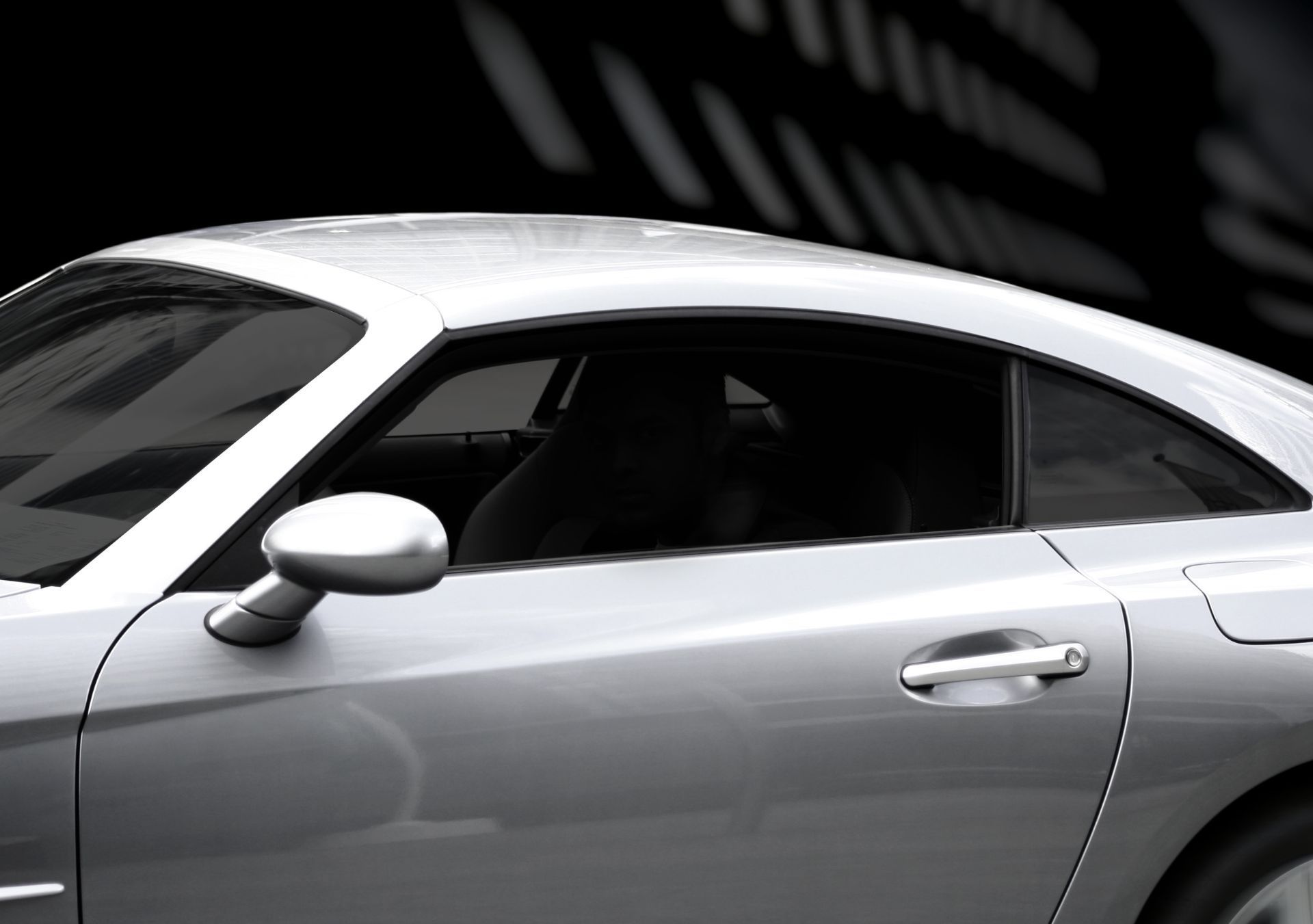
Most Common Personal Policies
Index
How Model Year and Trim Affect Porsche 911 Insurance Costs
Location Matters: State-by-State Insurance Premium Differences
Driver Profile and Usage Impact on Insurance Premiums
Choosing the Right Insurance Provider for Your Porsche 911
Coverage Options and What They Mean for Porsche 911 Owners
Insurance Cost Comparison by Porsche 911 Model and Year
Tips to Lower Your Porsche 911 Insurance Premium
Understanding Why Porsche 911 Insurance Costs More Than Average Cars
Contact Us
Owning a Porsche 911 is a dream for many car enthusiasts, but insuring this iconic sports car involves more than just picking a policy. Insurance costs can vary widely depending on a range of factors, from your age and location to the specific model and trim of the 911 you drive. Understanding these nuances can save you thousands annually and help you find coverage that fits your lifestyle and budget. This guide breaks down what you need to know about insuring a Porsche 911, including typical costs, influencing factors, and tips for securing the best rates.
According to insurance.com, the average annual insurance premium for a Porsche 911 is about $4,847, or roughly $404 per month. This figure sets a useful benchmark but keep in mind that your actual premium could be significantly higher or lower depending on your circumstances.
How Model Year and Trim Affect Porsche 911 Insurance Costs
The model year of your Porsche 911 plays a big role in insurance premiums. Newer models tend to cost more to insure because of their higher repair costs and advanced technology. For example, a 30-year-old driver insuring a 2021 Porsche 911 Carrera faces an average annual premium of $4,274, while a 45-year-old driver pays slightly less at $3,972 per year, reflecting the impact of driver age on rates as well.
Trim level is another key factor. The Porsche 911 Turbo S, known for its powerful engine and premium features, is the most expensive to insure among 911 variants. For a 30-year-old driver, the average annual premium for this trim is about $4,649. This is higher than the base Carrera model, illustrating how performance upgrades and added luxury translate into higher insurance costs. Additionally, the Turbo S is equipped with advanced safety features and high-performance components that, while enhancing the driving experience, can also lead to increased repair costs in the event of an accident.
Older Porsche 911 models generally come with lower premiums. A 2018 model averages around $2,080 annually, while a 2010 model drops further to about $1,598 per year. The difference of nearly $500 reflects reduced repair costs and depreciation, which insurers factor heavily into their pricing. Furthermore, older models may lack some of the expensive technology found in newer versions, such as advanced driver assistance systems, which can also contribute to lower insurance rates. However, it's important to note that while premiums may be lower, older vehicles may not have the same safety ratings, which can be a consideration for some drivers.
Another aspect to consider is the geographical location where the vehicle is primarily driven and parked. Urban areas with higher traffic density and crime rates can lead to increased insurance costs, regardless of the model year or trim. For instance, a driver living in a metropolitan area may see their premiums rise significantly compared to someone in a rural setting. Additionally, factors such as mileage and driving history can further influence rates; a driver with a clean record and lower annual mileage may benefit from discounts, making it essential to shop around and compare quotes from different insurance providers to find the best coverage at the most competitive rate.

Location Matters: State-by-State Insurance Premium Differences
Where you live can dramatically influence how much you pay to insure your Porsche 911. Insurance premiums vary widely across states due to differing regulations, accident rates, and repair costs. For instance, Michigan drivers pay an average of $4,100 annually for 911 insurance, while in Maine, the average drops to just $1,600. That is a substantial gap that underscores the importance of considering your location when budgeting for insurance.
These regional differences also reflect the local risk environment. States with higher traffic congestion, more accidents, or stricter insurance mandates tend to have higher premiums. Even within a state, urban areas often carry higher rates than rural ones, so your ZIP code can also affect your insurance bill.
Moreover, the climate and geography of a region can play a significant role in determining insurance costs. For example, states prone to severe weather events, such as hurricanes or heavy snowfall, may see higher premiums due to the increased likelihood of damage to vehicles. In contrast, areas with milder climates and less severe weather patterns might enjoy lower rates. Additionally, the prevalence of theft in certain regions can also impact insurance costs; urban centers with higher crime rates may lead to increased premiums as insurers account for the greater risk of vehicle theft or vandalism.
Furthermore, the local economy and population density can influence insurance rates. In states with robust economies and high population growth, there may be more vehicles on the road, leading to a higher probability of accidents. Conversely, rural areas with fewer cars may benefit from lower premiums due to the reduced risk of collisions. It's also worth noting that some states have unique insurance laws, such as no-fault insurance systems, which can further complicate the pricing landscape. Understanding these nuances can help drivers make informed decisions about their insurance coverage and potentially save money in the long run.
Driver Profile and Usage Impact on Insurance Premiums
Age and driving history are two of the most influential factors insurers use to calculate premiums. Younger drivers, especially those under 30, typically face higher rates due to statistically higher accident risk. For example, a 30-year-old driver insuring a 2021 Porsche 911 Carrera pays more than a 45-year-old driver, as noted earlier. This trend is not merely a reflection of age but also encompasses the experience level that comes with it. Younger drivers often lack the extensive driving experience that helps in making quick decisions on the road, which can lead to more frequent accidents. Additionally, insurers often analyze the types of vehicles younger drivers choose, as sporty or high-performance cars like the Porsche 911 are associated with a more aggressive driving style, further impacting insurance costs.
Your driving record matters just as much. Tickets, accidents, and claims history can increase premiums significantly. Insurers see clean records as a sign of lower risk, often rewarding safe drivers with discounts. Moreover, the severity of infractions can also play a crucial role; for instance, a minor speeding ticket may not affect your premium as drastically as a DUI or a major accident. Insurers may also consider the time elapsed since the last incident, with more recent infractions leading to higher premiums. Some companies even offer programs that monitor driving behavior through telematics, providing incentives for safe driving habits, which can lead to substantial savings over time.
How you use your Porsche 911 also plays a role. Cars used primarily for commuting or daily driving may attract higher premiums than those used sparingly or for leisure. High mileage increases the chance of claims, so insurers adjust rates accordingly. Additionally, the location where the vehicle is primarily driven can influence premiums. Urban areas with higher traffic congestion and accident rates typically lead to increased insurance costs compared to rural settings. Furthermore, the purpose of the vehicle can also affect rates; for example, if the Porsche is used for business purposes, such as client meetings or as a company car, this could result in higher premiums due to the increased risk associated with business-related driving. Insurers may also consider the security measures in place for the vehicle, such as anti-theft devices or secure parking options, which can mitigate risks and potentially lower premiums.
Choosing the Right Insurance Provider for Your Porsche 911
Not all insurance companies price Porsche 911 coverage equally. Some specialize in sports or luxury cars and offer more competitive rates or tailored coverage options. For example, Allied is known to offer some of the most affordable coverage for Porsche 911 owners, with average monthly premiums as low as $98, which is well below the national average.
Shopping around and comparing quotes is essential. Coverage details, customer service, and claims handling are just as important as price. Look for insurers with strong reputations for servicing high-performance vehicles and who understand the unique needs of Porsche owners.
Additionally, consider the various types of coverage available that can specifically benefit Porsche 911 owners. For instance, many insurers offer agreed value coverage, which ensures that in the event of a total loss, you receive the full insured value of your car rather than its depreciated market value. This is particularly crucial for classic or high-end models, where depreciation can significantly impact the payout. Furthermore, some providers might offer specialized coverage for aftermarket modifications, which are common among Porsche enthusiasts looking to enhance performance or aesthetics.
Another vital factor to consider is the insurer's claims process. A streamlined and efficient claims process can make a significant difference when you need to file a claim after an incident. Look for reviews or testimonials from other Porsche owners regarding their experiences with claims handling. Insurers that offer 24/7 claims support and have a reputation for quick resolutions can provide peace of mind, ensuring that you can get back on the road as soon as possible. Additionally, some companies may offer roadside assistance tailored for high-performance vehicles, which can be a valuable resource for any Porsche 911 owner, especially during long drives or road trips.

Standard auto insurance policies include liability coverage, which protects you if you cause injury or damage to others. However, given the value and performance of a Porsche 911, many owners opt for additional coverage like collision, comprehensive, and uninsured motorist protection.
Collision coverage pays for damage to your car from accidents, while comprehensive covers non-collision events such as theft, vandalism, or natural disasters. These coverages can be costly but provide peace of mind given the high repair costs associated with luxury sports cars.
Gap insurance might also be worth considering if you financed your Porsche 911. This coverage pays the difference between what you owe on your loan and the car’s actual cash value if it’s totaled.
Insurance Cost Comparison by Porsche 911 Model and Year
| Model Year | Trim | Average Annual Premium (30-year-old driver) |
|---|---|---|
| 2021 | 911 Carrera | $4,274 |
| 2021 | 911 Turbo S | $4,649 |
| 2018 | 911 (general) | $2,080 |
| 2010 | 911 (general) | $1,598 |
This table highlights how newer and higher-performance trims command higher premiums. It also shows the impact of vehicle age on insurance cost, with older models being more affordable to insure.
Tips to Lower Your Porsche 911 Insurance Premium
While insuring a Porsche 911 is generally more expensive than average cars, there are ways to reduce your premium without sacrificing coverage quality. Here are some practical tips:
- Maintain a clean driving record. Avoid tickets and accidents to qualify for lower rates.
- Consider raising deductibles. Higher deductibles can lower your monthly premium but increase out-of-pocket costs in a claim.
- Bundle policies. If you have homeowners or renters insurance, bundling with the same insurer can yield discounts.
- Limit mileage. Using your Porsche 911 primarily for leisure rather than daily commuting can reduce risk and lower premiums.
- Shop around annually. Insurance rates change, so comparing quotes each year ensures you are not overpaying.
Understanding Why Porsche 911 Insurance Costs More Than Average Cars
Several reasons explain why Porsche 911 insurance is pricier than typical vehicles. First, the 911 is a high-performance sports car with expensive parts and specialized repair needs. Body panels, engine components, and advanced electronics can cost significantly more to fix or replace than those on standard cars.
Second, the driving style often associated with sports cars can increase risk. Insurers price policies to reflect the higher likelihood of accidents or claims. Finally, the value of the car itself means insurers have more at stake, which translates to higher premiums.
That said, owning a Porsche 911 does not mean you must accept sky-high insurance bills. Understanding the factors at play and choosing coverage wisely can make insuring this dream car more manageable.
Before You Go: Key Takeaways for Porsche 911 Insurance
Insurance for a Porsche 911 varies widely based on model year, trim, driver age, location, and insurer. The average annual premium hovers near $4,847, but savvy shoppers can find much lower rates, especially by comparing providers like Allied's affordable options.
Newer and higher-performance trims cost more to insure, while older models offer savings. Location is critical-premiums in Michigan can be two to three times higher than in states like Maine. Your driving record and how you use the car also matter greatly.
Choosing the right coverage means balancing protection and cost. Collision and comprehensive coverage provide valuable security for this luxury sports car, but they come at a price. Evaluating your needs and shopping around regularly can help you maintain the best balance.
Frequently Asked Questions About Porsche 911 Insurance
Q: Why is Porsche 911 insurance more expensive than average cars?
A: The Porsche 911 is a high-value sports car with costly repairs and higher risk, which leads to increased insurance premiums compared to standard vehicles.
Q: How does my age affect my Porsche 911 insurance premium?
A: Younger drivers typically pay more because insurers view them as higher risk. For example, a 30-year-old pays more than a 45-year-old for the same Porsche 911 model.
Q: Can I lower my Porsche 911 insurance by choosing an older model?
A: Yes. Older Porsche 911s generally have lower premiums due to depreciation and lower repair costs, but coverage needs should still be carefully considered.
Q: Does location really make a big difference in insurance costs?
A: Absolutely. Insurance premiums vary by state and even within regions. For instance, Michigan drivers pay much more than those in Maine for Porsche 911 coverage.
Q: What insurance company offers the best rates for Porsche 911?
A: Some insurers specialize in sports cars and offer competitive rates. Allied, for example, provides some of the most affordable monthly premiums for Porsche 911 owners.
Q: Is it worth adding collision and comprehensive coverage for a Porsche 911?
A: Given the high repair costs and value of the Porsche 911, collision and comprehensive coverage are often recommended to protect your investment fully.


